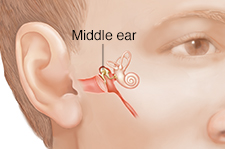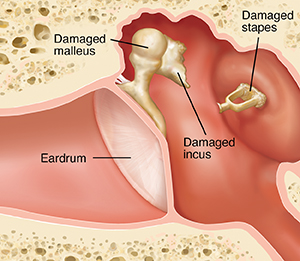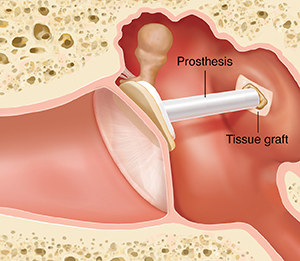Ossicular chain reconstruction can improve conductive hearing. In some cases, all 3 middle ear bones are replaced. During surgery, you will be given local anesthesia with sedation. Or you may get general anesthesia. Middle ear bone surgery takes about 1 to 3 hours. It is often done along with a tympanoplasty or a mastoidectomy. It's also called middle ear bone surgery.
Damaged malleus, incus, and stapes bones
All 3 middle ear bones may be damaged. Your surgeon reaches the bones by going through the ear canal or making an incision behind the ear. Then an incision is made around the eardrum. The eardrum is held to one side. All or part of the damaged bones are removed.
Replacing all 3 bones
All 3 bones may be replaced with an artificial part. This part is called a prosthesis. Your surgeon places one end of the prosthesis against the eardrum. The other end may touch the bone over the inner ear or be laid against a tissue graft. Then the eardrum is put back in place.




